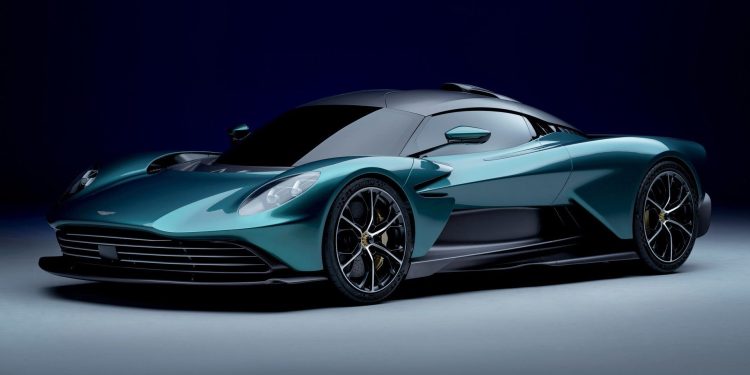Aston Martin unveils Valhalla hypercar, a 698kW super hybrid
The Aston Martin Valhalla has had a curious road to production. It was initially unveiled in prototype form in 2019, with speculation it would utilise a six-cylinder powerplant. Two years have passed since and, judging on how different the model now looks in its newly revealed production guise, Aston has clearly been hard at work.
Aston Martin has deployed a series of visual changes that soften the Valhalla. The new grille gives the model a more familial look, and the aggressive side pod look has been toned down, too.
The biggest story, though, is the engine. There’s no six-popper to be seen; Aston Martin instead leaning on its relationship with Mercedes-AMG to use the marque’s famed 4.0-litre bi-turbo V8 engine paired to two electric motors.

By itself, the V8 develops a fairly potent 551kW of power. The two electric motors are the icing on the performance cake, though, adding another 150kW, for an outright power output of 698kW and 1000Nm of torque.
According to Aston, the 100km/h marker can be hit in as little as 2.5 seconds, and top speed is limited to 330km/h. The brand also claims that the Valhalla should be capable of a sub six-and-a-half-minute lap time at the Nurburgring Nordschleife.
The Valhalla’s hybrid system is clearly anything but an afterthought. With a motor placed on each axle, the British marque says that the engine and motors can all run in different gears at the same time in order to always be ready to deliver power with the least amount of delay or lag.

There are a few interesting quirks to note. When the model is driving in electric mode, for example, it becomes a front-wheel drive car … since it only uses the front-mounted motor. The eight-speed double-clutch box also technically doesn’t come with a reverse gear. Instead one of the electric motors works in reverse.
In the aforementioned electric mode, Aston Martin says the Valhalla can hit 130km/h; enough to hold its own in motorway traffic. You won’t be doing this too often, though, as the model’s pure electric range is only rated for 15km.
All up, the whole package tips the scales at just 1550kg, thanks in part to Aston’s use of a carbon fibre tub. It’s one of numerous cues that link to the brand’s learnings through motorsport. The Formula 1-style pushrod suspension with inboard Multimatic springs and Adaptive Spool Valve dampers is another cue, as is the active aero capable of 600kg of downforce at 240km/h.

It’s tempting to assume that, given all of the above, the Valhalla is some kind of hardened no-compromise racer for the road. But, maybe unsurprisingly given Aston’s luxury chops, it aims to also be an easygoing hypercar to live with.
There’s a new touchscreen system with Apple CarPlay and Android Auto. Dual-zone climate control and a full suite of safety tech (including radar cruise control, blind spot monitoring, and the like) will feature, too. Aston plans to release the first pics of the cabin at a later date.
“Though the legacy of Valkyrie is clear, Valhalla is now a more mature, fully resolved piece of design,” said Marek Reichman, Aston Martin’s Chief Creative Officer. “One which combines the pure aerodynamic function you would expect from a marque competing in Formula 1 together with the beautiful form, striking proportions, and exemplary detailing for which Aston Martin is renowned.”





